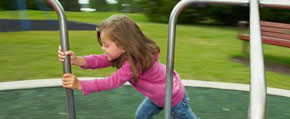We are pleased to announce an exciting new alliance between Active Living Research and GP RED to co-host and coordinate...
What Neighborhood Area Captures Built Environment Features Related to Adolescent Physical Activity?
Boone-Heinonen, J., Popkin, B. M., Song, Y., & Gordon-Larsen, P. (2010). What Neighborhood Area Captures Built Environment Features Related to Adolescent Physical Activity? Health & Place, 16(6), 1280-1286.
In research investigating built environment (BE) influences on physical activity (PA), inconsistent neighborhood definitions may contribute to inconsistent findings. Using data from the National Longitudinal Study of Adolescent Health (Wave I; 1994-95), we compared associations between moderate-vigorous PA (MVPA) and PA facility counts and street connectivity measures (intersection density and link:node ratio) within 1, 3, 5, and 8.05 kilometers (km) from each respondent's residence (Euclidean neighborhood buffers). BE-MVPA associations varied by BE characteristic, urbanicity, and sex. PA facilities within 3 km buffers and intersection density within 1k buffers exhibited the most consistent associations with MVPA. Policy recommendations and corresponding research should address potential differences in relevant neighborhood areas across environment feature and population subgroup.
Related Tools & Resources
STAY UP TO DATE
RECENTLY ADDED TOOLS & RESOURCES
MOVE! A BLOG ABOUT ACTIVE LIVING
The "Active Living Conference" aims to break down research and practice silos and...







